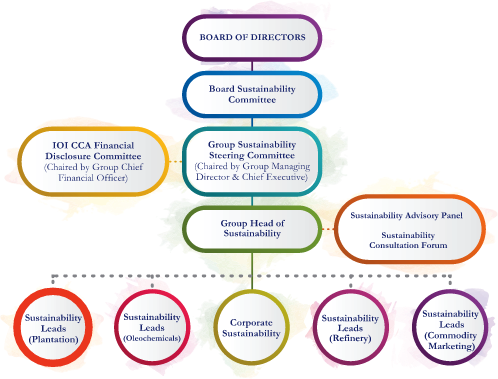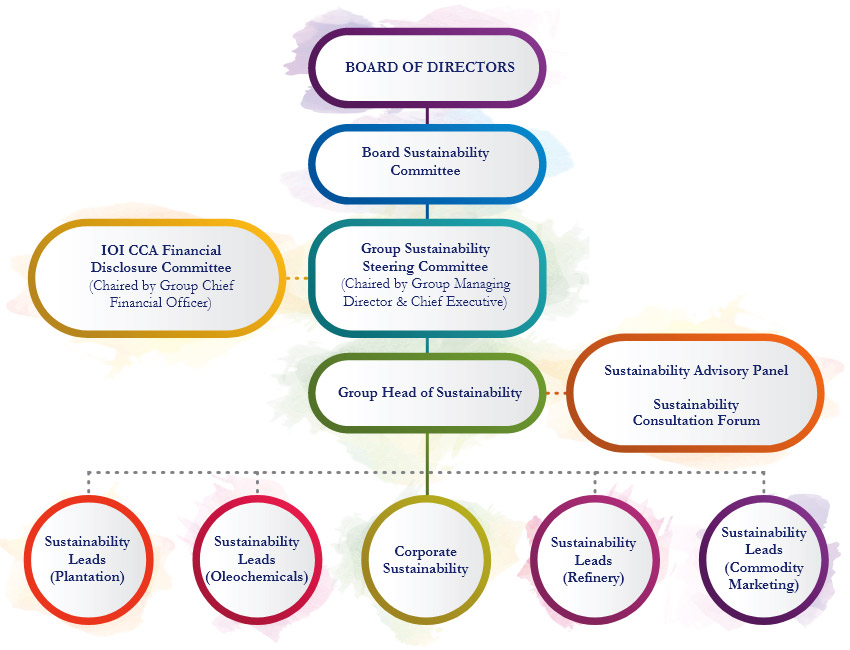

Group Managing Director and Chief Executive
Our materiality assessment process is guided by Bursa Malaysia’s Sustainability Reporting Guide 3rd Edition, Bursa Malaysia’s Materiality Toolkit, and the Global Reporting Initiative (“GRI”) 3: Material Topics 2021.
The process of determining the material matters is as follows:
A double materiality assessment was also conducted to identify sustainability matters that have both significance to IOI’s Environmental, Social, Governance/Economics as well as financial impact on IOI’s performance.
To ensure effective and successful implementation of IOI Corporation Berhad (“IOI”) sustainability commitments and policies, clear lines of accountability, well-defined roles, and responsibilities within our Governance structure were established.
This year, IOI took further steps to enhance the importance of sustainability within IOI by strengthening our sustainability governance framework through the formation of the Board Sustainability Committee (“BSC”) and putting in place IOI Climate Change Action Financial Disclosure Committee.

Click to enlarge the image.

Our actions are guided by IOI’s Sustainable Sustainable Palm Oil Policy (“SPOP”) which together with the Environmental Management Guidelines (“EMG”) and Zero Burning Policy are in full alignment with our newly made commitments towards the Science Based Target initiative Forest, Land and Agriculture (“SBTi FLAG”).

This year, to further emphasise the importance that IOI placed on Biodiversity, the new revision of our previous Biodiversity and Conservation Guidelines will now also include ecosystem enhancement.
With the revised guideline,
we aim to:

Biodiversity and Ecosystem Enhancement Guidelines
Biodiversity and Ecosystem Enhancement Guidelines is revised in order to provide guidance for the protection, conservation and enrichment of biodiversity and natural ecosystem in our operating sites. The guideline is in alignment with HCV-HCS assessment manual, RSPO Principle 7 & MSPO Principle 5 as well as the recommendations from SBTN draft guidance, which comprised of four key steps as follow:
STEP 01
Identification of Biodiversity & Conservation Value Areas
STEP 02
Execution & Management
STEP 03
Threat Monitoring & Crisis Management
STEP 04
Impact Evaluation, Mitigation, Protection & Enhancement